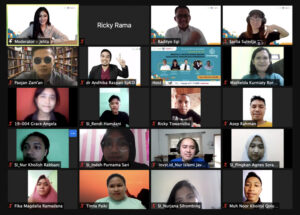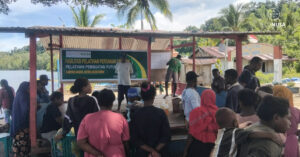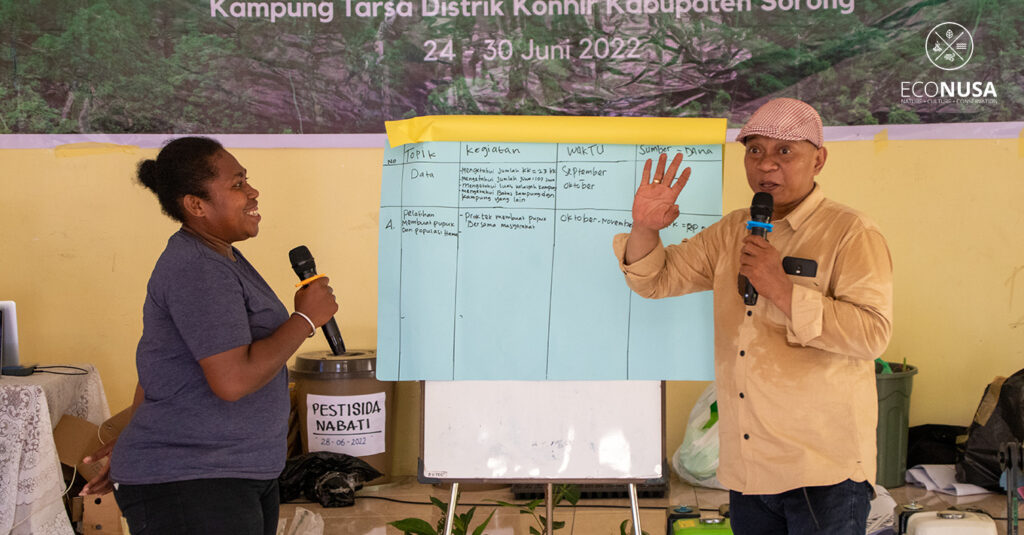
In a beautiful morning end of June 2022, Dina Fadan and Sereptura Fadan got good news after the arrival of Jefri Fadan, the Head of Klasman Village in Malabotom District, Sorong Regency, West Papua Province. Upon having just had their breakfast with baked sago, bread, and sweet tea, both was delighted as they were assigned to follow the Social Transformation School (STS) training provided by EcoNusa.
STS was held from 26 to 29 June 2022 at Tarsa Village, Konhir District in Sorong Regency. Two days before, eleven village heads from four districts joined the workshop at the same venue.
“We are glad for the assignment as the village cadres to the training. The knowledge and experience are not only for themselves but also to be shared and developed jointly with the community,” said Dina.
Read also: STS Tarsa, Collaborative Action to Develop Village
Klasman Village was established in 2014 after regional expansion from the main village, Klawana Village in Klamono District. Klasman which is inhabited by 23 families with a total of 107 people is within the concession of palm oil company of PT Inti Kebun Lestari (PT IKL). After evaluation, Sorong Regent Johny Kamuru revoked PT IKL license on 27 April 2021.
Klasman Village
Like the common villages in Tanah Papua, public and social facilities in Klasman Village are indecent. There are only road, office, and village vehicle, clean water, church, and Community Health Center (Puskesmas), as the local assets of Klasman. Electricity is only generated at night from the diesel-generated power source for light and electronic devices of the locals.
Only some houses at Klasman Village are deemed into permanent housing category. Some others still use wood as foundation, wall, and floor. Besides, Klasman only has four bathrooms and toilets for public. “Hopefully, each house will have one in the future to ease the people’s need at night or at rain,” Dina said.
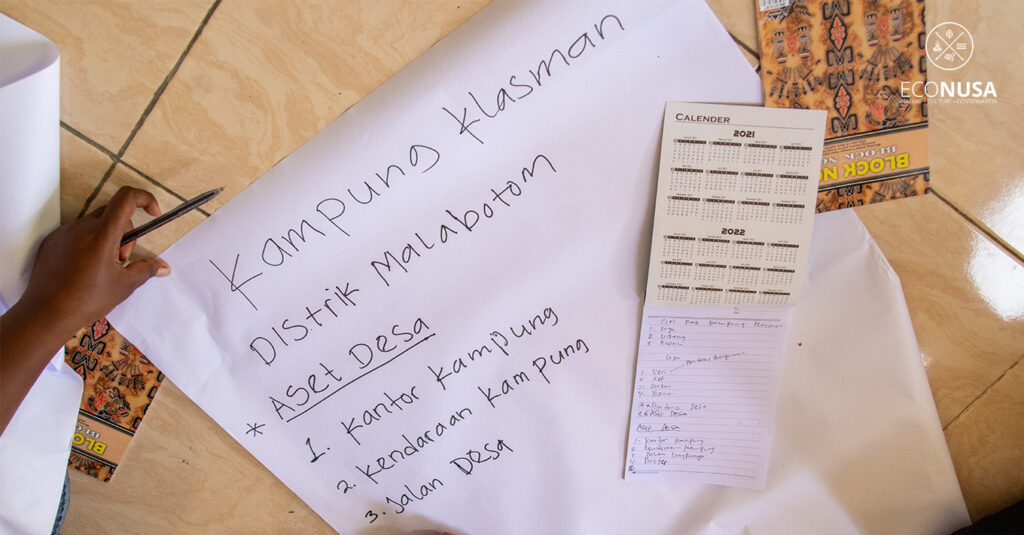
Related to livelihood, the villagers of Klasman live from sago. They cultivate land using nomadic cultivation method and small garden on their back yard. There are chilly, banana, water spinach, corn, taro, and sweet potato. Only few families have quite large cultivation areas to plant long term vegetation such as durian, langsat, rambutan, jackfruit, and coconut.
Read also: Developing Village Based on Potential and Asset
As to Dina, the locals could earn around Rp500 thousand to 1 million in one harvest of the short-term vegetation after personal spending. The income from the long-term vegetation can yield around Rp1-2 million. “We want to enhance our knowledge on agriculture. We have so far been familiar only with digging and planting. We have no idea of what fertilizer that should be used,” she said.
Klasman Village condition could represent the condition of villages in Tanah Papua. Despite the richness of natural resources, community capacity has not been in line with the capacity to manage the abundance equally and sustainably. The development program implemented by various parties went so fast that capacity building has lagged behind.
Creating Pathway
Considering the fact, the principle of Sorong STS, Kristian A. Renyan, said that the village head workshop and STS are parts of the School of Eco Involvement (SEI). The program aims to establish a community resilience in natural resources protection and management amidst the customary areas.
Read also: Retracting Egek, Looking at Moi Tribe’s Natural Deposit
As to Kristian, the philosophy of community resilience formation is reflected from the jargon that says “walking while creating pathway” which is used in each STS event. In addition to Tarsa Village in Konhir District, STS had been implemented in Morekau Village in Seram Bagian Barat, Mogatemin Village in South Sorong, Kufuriyai Village in Kaimana Regency, and Waninggap Nangggo Village in Merauke.
“The “walking while creating pathway” jargon reflects the condition of community. People in Tanah Papua who has not completely become the subject of development has boosted up themselves. They walk towards resilient community economically and socially. To meet the goal, the community create their own pathways in line with the tradition, culture, and condition of each village,” said Kristian.
Prior to STS implementation, the EcoNusa’s Division of Natural Resources and Community Resilience Program has made preliminary study on economic potential development in a district. It includes any stuffs that could improve the local economic potentials, prominent commodity, and the largest allocation of public spending.
Read also: Pili Nut, Shade Tree as the Source of Livelihood
Based on the preliminary study here, STS at Tarsa Village focused on the development of organic farming. This could be seen from the soil fertility and suitability in the development of taro commodity. “The focus will be different from other places. In Merauke, for instance, they are taught to create database and organic farming. Meanwhile, STS in South Sorong focused on agriculture, fishery, and forestry,” said Kristian.
On the third day of STS, all participants got new knowledge on organic farming taught by Ladino Suyoto, an agriculture facilitator. The first session began by field practice at the local garden at Tarsa and they learned how to clean up land from any nuisance plant, identify the characteristic of ill plant, loosen the ground, and sow seeds.
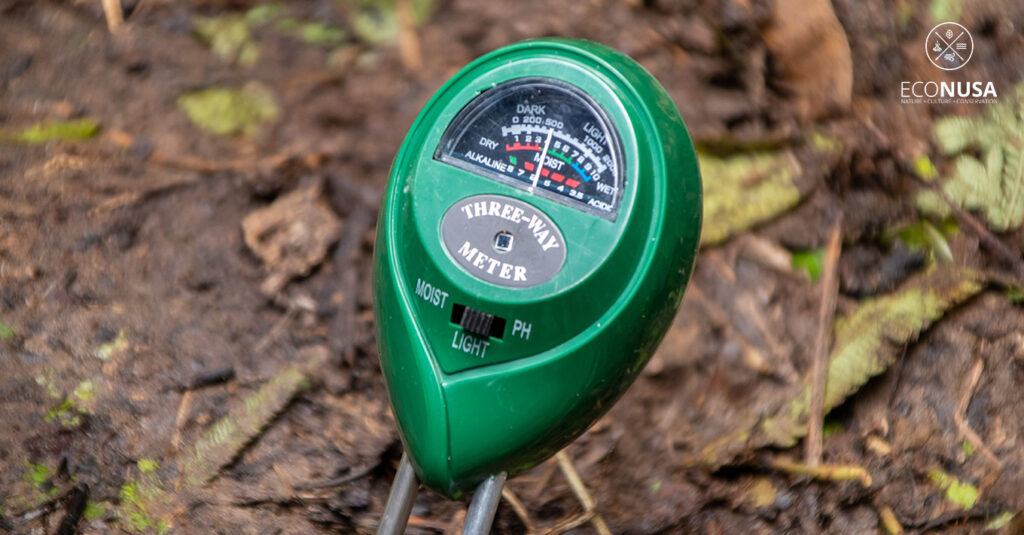
In the afternoon, Ladino taught the STS participants to create organic pesticide using the available materials from the surroundings such as lemongrass, papaya leaves, and soursop leaves. Meanwhile, organic fertilizer is created from liquid waste of rice washing, red onion, banana trunk, EM, and sugarcane drop.
Follow-up Plan
At the end of STS at Tarsa, the participants of eleven villages arranged follow-up plans as their guidance for collaborative work with the community. Soon they are back to their villages, they should teach what they got to the locals by making a three-month Village School.
Read also: W20: Women, Pivotal Milestone for Village Development
In the food security development plan, Dina and Sereptura planned to plant banana, taro, sweet potato, cassava, corn, tomato, and chilly. Besides, they also intended to cultivate parrot and tilapia fish. “I want to create a shrimp pond too, because there is abundant shrimp at Klasman from the nearby river,” said Sereptura.
In addition to materials given during STS, Sereptura and Dina wanted to improve information and data of Klasman Village. They wanted Klasman to have map for the process of customary areas recognition by the ongoing committee of indigenous people.
“We also hope that the government build road connecting village to town. To reach downtown to sell the crops, we spend Rp500 thousand to Rp1 million for fuel to SP1 (Residence Unit), and then go by taxi which cost Rp500 thousand. The trip takes more than 2 hours. If there is road connecting village to town, we do not spend much cost,” said Sereptura.
Editor: Leo Wahyudi & Nur Alfiyah


